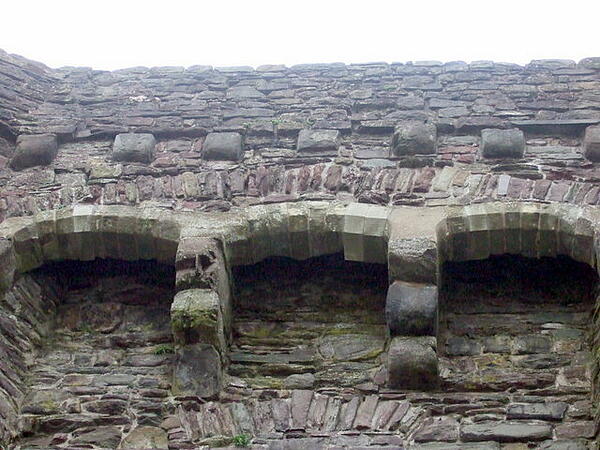Castle Features
By the time concentric castles were being built around England and Wales, during the reign of Edward I, a number of features had become commonplace in castles. Machicolations or ‘murder holes’ are one of the more key features included in castle building, providing defending soldiers with the ability to throw substances such as boiling water or pitch (and on occasion even parts of dead bodies) onto those attacking below. In order to get past this particular obstacle, soldiers had to get extremely close to the main entrance so they were difficult to target.
Another common feature across castle building was the use of thick walls and battlements, which would have been difficult to penetrate even with the aid of a battering ram. The battlements are technically referred to as ‘crenellations’ and offered the castle’s defenders a place to hide when they were not firing on those below. Wooden shutters were also placed between these gaps to provide additional protection to those firing below. However, the stone walls were so strong on their own that there was often little need for many soldiers at this point of the castle.

To aid defence, a keep was traditionally built above the castle’s walls to provide those inside with a good view of what was going on below. The walls below them were known as curtain walls and would get progressively lower as they got further from this keep, allowing defenders to fire on attackers as they fought their way through the wall. However, the combination of the keep and the walls meant entire castles were often too well defended for attackers to enter. This meant they would often have to enter via the main entrance and battle in the open across what was known as the ‘killing field’.
Round towers were another strong defence for castles, and were placed on a keep or a curtain wall to provide defenders with a strong position over their enemy. They were easy to access for defenders as they often had spiral staircases that led straight to the top. Engineers also believed that the round walls would deflect any missile thrown at them, although this was often more a case of luck.
Round towers did, however, have the strong benefit of preventing ‘sapping’, which is a term that referred to enemies digging underneath a tower to attack a weak corner, such as a tower. This was effective against square towers, but rounded towers were often too strong to be attacked in this way. This made them a strong feature that was frequently included in castles during this time.
See also:
MLA Citation/Reference
"Castle Features". HistoryLearning.com. 2024. Web.
